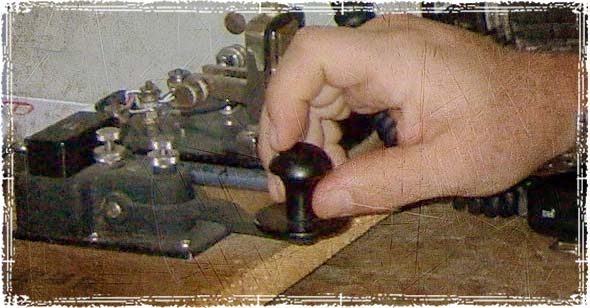When talking about survival communications, no conversations can be had without talking about the importance of Ham Radio. While some dismiss its relevance in today’s age of technology, the following story shows you why it’s still as important today as it was many decades ago.
The Importance of Ham Radio & Morse code

One day while scanning the Ham Bands, amateur radio operator Bob Williams, N7ODM, of Bozeman, Montana, heard a faint Morse code signal. The transmission was coming from Glenn Russell Ruby Jr, W7AU, who had just broken his leg out in the wilderness. Glen was using a portable radio and Morse code to send out a call for help. Although the signal was very weak, Bob was able to pick up Glen’s call for help.
Injured with a broken leg, Glen was able to get out his exact GPS coordinates and detailed information on his physical condition. He was able to tell Bob who to contact for emergency assistance, which Bob then quickly did.
The whole thing started when Glen slipped on a wet rock and broke his leg while hiking in the high Cascades of Western Washington. Once injured, Glen’s instincts to survive took over. Before even calling for help, he set up his tent, got into some warm clothes, had a snack, and then strung up a wire antenna.
Glen then fired up his Ham Radio and put out his call for help. Thanks to his radio, rescue crews were able to locate and rescue Glen.




Keeping a cool head in an emergency can’t hurt as well. Sounds like that, along with good planning, really contributed to his survival. Good for him! Glad he is ok…
That is absolutly awesome, man I need to get into Ham radio. I’m so thankful the guy was saved. I wish the main stream media would put this stuff out, (Perhaps they did, but I didn’t see it, that’s why I say that) It is so encouraging and uplifting.
When I was in the Army, the unit I was in had a radio man, that picked up some “guys” down in SA that needed assistance, they were saved basically the same way. The guy got a bunch of medals and some really great “kudos”, but no one on the outside found out anything, except maybe like I’m telling – generic
Very interesting, but without GPS and maybe some flares he might face some problems.
Great story though – I’ll relate it to my ham friends here in China and refer the website.
73 de Zak VK6BMZ
All very well if you can read and semd morse. The modern new ham has no real interest in morse. My suggestion would to carry a small Motorola radio on the 446 band. There are hundreds and hundreds in use in the UK and Europe. A call for help using RT will more than likely be heard. I will send you some details.
Kind regards
Jack G4AMF
..”the modern new ham..”… ;-) Yea, the internet almost put Ham Radio out of business. I got my Extra-Class Ticket when we still had the 20 WPM Code requirement. I still love using CW… it’s so elegant. People don’t realize a handful of scrap radio parts and a battery will let you send CW World-Wide. I always think about that in the ‘Disaster’ movies where someone’s plane, or shipwrecked, etc. Too bad one of them wasn’t a Ham that could have built a CW transmitter out of the junk radio. S-O-S… would eventually be triangulated and rescued.
73
… Sorry… in the above comment I used the abbreviation CW: CW stands for Continuous Wave— i.e.; Morse Code (though not necessarily). CW is just turning the transmitter On-Off-On-Off, etc., so a radio signal goes out.
Early radios were almost all CW; you see it in the movies a lot. CW was what all the early Wars were fought with up until the invention of AM,FM and then all the Digital modes.
Anyway— today, there’s a ‘HUGE’ amount of CW still being used on the Ham Bands. Plus it’s very low power and long-range. Anyone who’s really interested; you can get a Novice license today with a very basic test and be allowed both CW and Voice modes.
As survival goes: today, for a few $bucks you can build a CW transmitter in an Altoids can or buy a transceiver for almost nothing. And the key is, CW, even if you only have a Altoid-Can, 9V battery transmitter— can go World-Wide. And you Don’t need to report your GPS coordinates like the guy above. (It sure helped though.)
Someone sitting on a 1 watt CW transmitter just going S-O-S, over and over, even if you don’t know Morse code; would eventually be heard and rescued because positional triangulation is a fine-art today (even a Ham Hobby).
Please see http://www.arrl.org for more info (American Radio Relay League)
RM